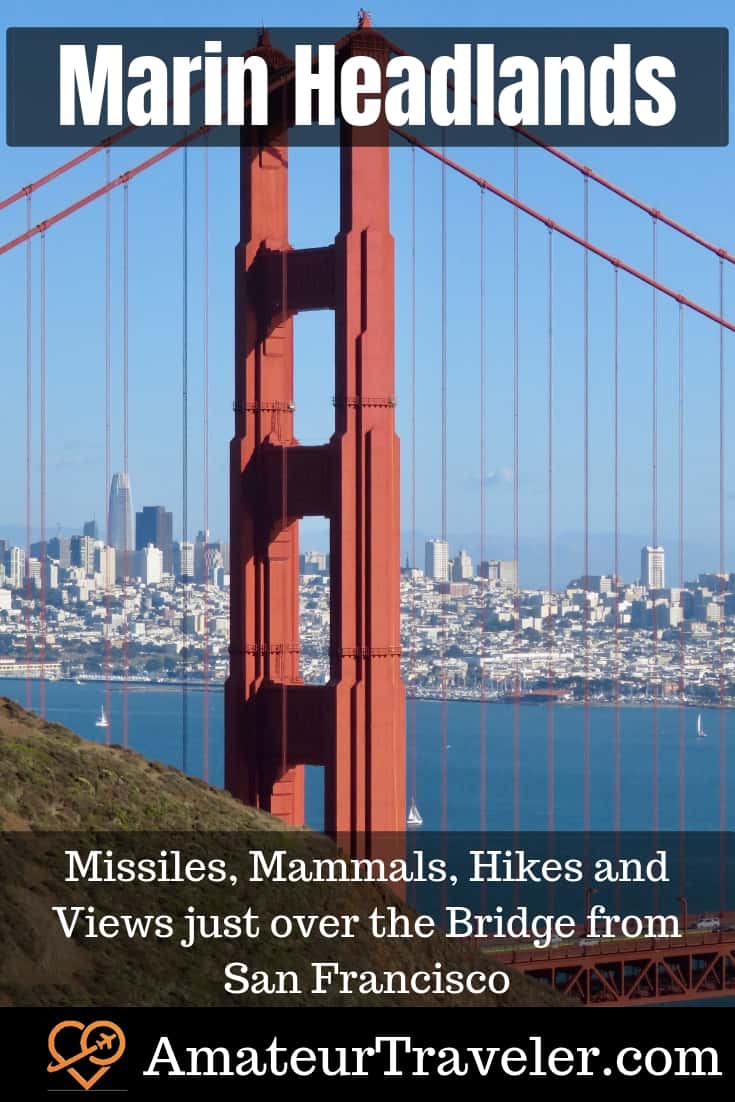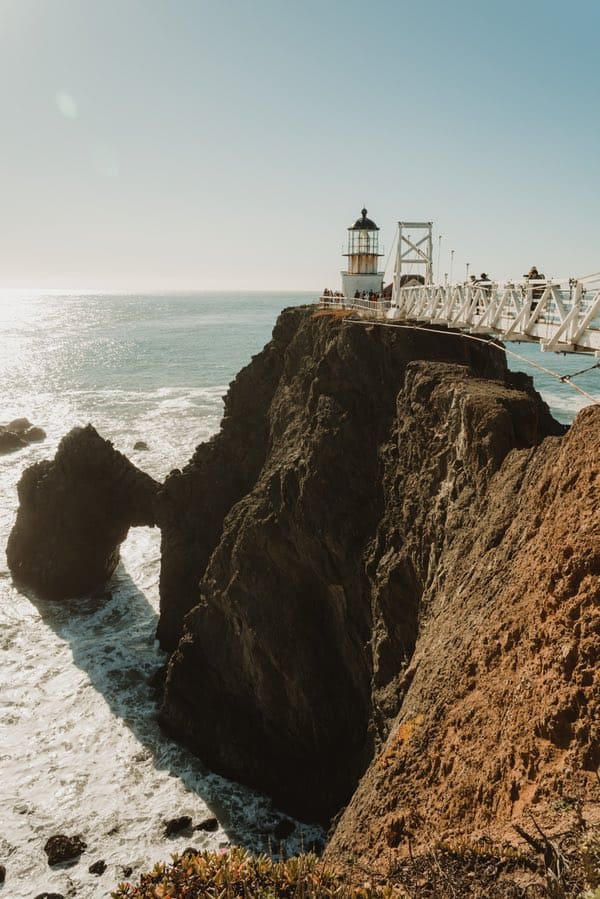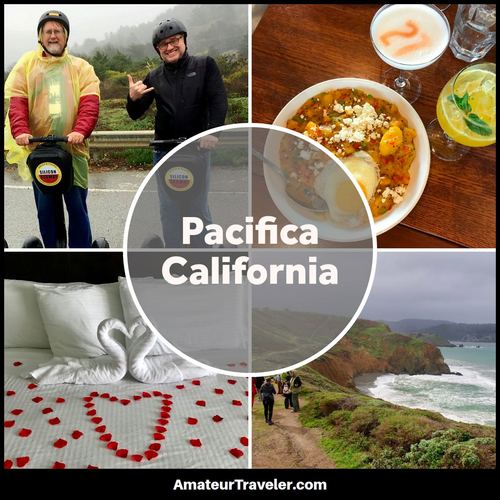Marin Headlands – Missiles, Mammals, Hikes and Views just over the Bridge from San Francisco
categories: San Francisco Bay Area
Table of contents: ()

Just over the Golden Gate Bridge from San Francisco is one of the richest sites in the Golden Gate National Recreation Area. Here you can find a quiet bed for the night, people caring for injured sea mammals, a bit of cold war history, a spectacular view of the Golden Gate Bridge, a beach, and numerous hikes. All that and you can be back in the city for dinner if you prefer.

Marine Mammal Center
One of the surprising features of the Headlands is the world’s largest hospital for marine mammals. The Marine Mammal Center, which opened in 1975, provides state-of-the-art veterinary services to California sea lions, sea otters, Pacific harbor seals, Steller sea lions, Northern fur seals, Guadalupe fur seals, and Northern elephant seal pups. During our recent visit, they had “patients” from all 7 different species in residence. When you see their life-size statue of an elephant seal you will understand why they only care for pups.

The Marine Mammal Center has a sister facility in Kailua-Kona on the Big Island that also cares for Hawaiian monk seals.

The patients at the facility may be orphans, injured, or ill. Some of the injured animals have had run-ins with sharks but some have become tangled in plastic trash.

The center cares for around 600 mammals a year, restoring them to health and returning them to the sea. Even just feeding a large number of marine mammals every day can take a significant amount of work… and fish. They are aided by more than 1,200 volunteers in both the care and rescue of these animals. You can help without even getting wet by participating in their Adopt-a-Seal program… but you can’t take one home.
This video shows a young “volunteer” from our tour learning how to use a wooden shield to help round up a seal (ok in the demonstration a stuffed animal) and get it into a carrying container without getting bitten. Don’t try this at home. In California, if you see a marine mammal in distress you can call their 24-hour hotline: 415-289-SEAL.

Rodeo Beach
Just down the hill from the Marine Mammal Center is the popular Rodeo Beach. You can catch a Muni bus from San Francisco to the parking lot of the beach. The beach has a picnic area and public restrooms and is popular with families with dogs.
WWII History at Marin Headlands
Right behind the parking lot of the beach are the buildings of Fort Cronkhite. There were defensive gun emplacements in Marin Headlands dating back to the 1890s, but this was expanded in WWII. Much of this area was turned over the army to protect San Francisco and the entrance to the strategic San Francisco Bay. While the Japanese did invade Alaska, they never made it to California. With the destruction of much of the Pacific Fleet at Pearl Harbor in 1941, that seemed much less certain at the time.

Hike to Battery Townsley
There are lots of great hikes at the Marin Headlands but one I would recommend is a steep but relatively easy hike from Rodeo Beach up the hill to Battery Townsley. This was one of the concrete gun emplacements or casemates that protected the mouth of the harbor. It had large 16″ guns that could fire a one-ton shell 25 miles.
When the gun went off soldiers remembered “hats blown off, pants and jacket seams ripped open, doors warped, and unwary crewmen literally knocked off their feet.”

Just outside the battery is a huge 16″ gun, although this one is a different bit of WWII history as it is one of the guns of the battleship Missouri. It was on the deck of the Missouri where the Japanese officially surrendered.

Cold War History at Marin Headlands
During the Cold War even 16″ guns were not enough to protect the area from Soviet bombers so the batteries were removed and replaced with Nike Missile batteries. If you visit on a Saturday you may find, as we did, the Nike Missile site open and receiving visitors. It was fascinating. A number of veterans were acting as docents explaining how the Nike Missile system worked.
The Nike system was the last line of defense. It assumed that a Soviet bomber had already gotten past the Air Force and the Navy and it was up to these Army batteries to stop them. The targeting radar could track up to 75 miles away and guided a Hercules missile directly to the bomber formation.

The system was all built using tubes in a time before integrated circuits but could get a missile, we were told, within 100 feet of a plane. To understand why 100 feet was close enough, you need to understand that these missiles carried a nuclear payload twice as powerful as the bomb dropped on Hiroshima. By the time these missiles were fired in anger, WWIII would have already started. In the Cold War the tracking radar and the two mobile control units were deployed on the top of Hawk Hill and Hill 88 for optimum visibility.

I wanted to take a picture of the missile before we left so we walked from the control room past the manikins in the old guardhouse. As we were about to walk away someone called over the question, “were we going down?”. We had no idea there was a “down”. The mechanism to open the 6,300-pound “garage doors” and deploy a missile still works so that the missiles can be raised and lowered back into a bunker that still contains a number of missiles. Of course these missiles are no longer fueled of loaded with nuclear weapons… I hope.
- Book Your Accommodation HERE
- Save at San Francisco's Top Attractions with a San Francisco CityPass
- Search for Great Tours HERE
- Buy Travel Insurance
- Get a Car Rental

Zoltan Kovacs
Point Bonita Lighthouse
Another great stop at Marin Headlands is the Point Bonita Lighthouse at the mouth of the bay. Parking is a bit complicated there so you may have to park in the bigger lot on the other side of the YMCA buildings and walk up. This area is often quite windy. The lighthouse is on a rocky promontory connected to the main parking lot by a tunnel and a suspension bridge. When I last visited you could only get there on a docent-led tour as the park service kept the gate to the tunnel entrance locked.
Youth Hostels
If you want to sleep in the park, there are two different hostels in the park.

The HI-Marin Headlands is set in what used to be officers’ quarters uphill from the Marin Headlands Visitor Center. It offers both dorm and private rooms. The building it is in is lovely and the setting is in a grove of fragrant Eucalyptus trees.
The San Francisco YMCA also has a facility with meeting rooms and dorm rooms near Point Bonita Lighthouse. The facility itself is less picturesque but the views from across the road include the Golden Gate Bridge.

Views of the Golden Gate Bridge
From the Lighthouse to the bridge there are a number of places where you can park to see views of the Golden Gate Bridge and the city beyond. Some of my favorites are the ones closest to the bridge (see the first photo in this article).

Visitors Center
For help planning your visit to Marin Headlands make a stop at the visitors center which is in an old church just down the hill from the hostel and officer housing. The visitors center has some exhibits about the local flora and fauna and about local history. It also has a gift shop where you can stamp your National Park Passport.
Conclusion
Whether you are a local, looking to explore your own backyard or a tourist looking for a break from the city, Marin Headlands is worth exploring and just may surprise you. Whether you are watching the hawks on Hawk Hill, viewing the bridge, or rejoicing that the world did not end with WWIII, the Marin Headlands may have something for you.
Leave a Reply
Tags: golden gate bridge, golden gate national parks, marin, marin county, marin headlands, san francisco, san francisco bay area

 75 Facts about the Golden Gate Bridge
75 Facts about the Golden Gate Bridge Pacifica California – San Francisco’s Nearest Beach Town
Pacifica California – San Francisco’s Nearest Beach Town 22 Best Views of the Golden Gate Bridge – A Guide for Photographers
22 Best Views of the Golden Gate Bridge – A Guide for Photographers Best San Francisco Food Tours for Foodies
Best San Francisco Food Tours for Foodies
